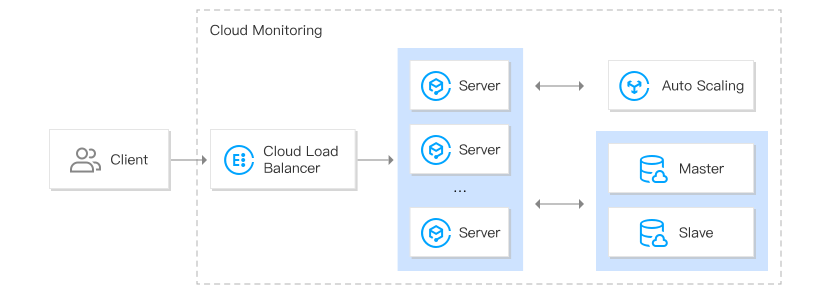
Cloud Load Balancer
A secure, stable and elastically scalable traffic distribution service.
Overview
Tencent Cloud Cloud Load Balancer (CLB) is a secure and fast traffic distribution service. Inbound traffic can be automatically distributed to multiple Cloud Virtual Machine (CVM) instances in the cloud via CLB, improving service capabilities systematically and eliminating single points of failure. CLB supports hundreds of millions of connections and tens of millions of concurrent requests, making it easy to handle high-traffic access and meet demanding business needs.
Benefits
High Performance
High Availability
Elastic Scalability
Security and Stability
Low Costs
Features
- Multi-protocol Forwarding
- Weight Configuration
- Content-based Routing
- Request Redirection
- Multiple Scheduling Algorithms
- Session Persistence
- Health Check
- Cross-availability Zone Disaster Recovery
Scenarios

Business Type
- The business has obvious peaks and valleys, and business stability and low costs are desired.
Scenario Description
- The business goes through significant peaks and troughs and requires the flexible control of backend resources.
The business has requirements that are highly time-sensitive. For example, during ecommerce promotion campaigns, web page views may increase by over 10 times within a few hours, and a large number of backend CVMs need to be added when the number of visitors surges. When the traffic drops, the unnecessary CVMs needs to be terminated. You can use CLB to distribute traffic to the business systems, which helps flexibly enhance the service capabilities of the application systems and elastically adjust the backend resources in real time.
- The business has high peak traffic and needs to build a low-cost architecture.
When a business has high peak traffic, using traditional hardware to build a cluster is very costly and requires tedious OPS work. CLB can work together with Cloud Monitor to effectively manage high peak traffic and reduce deployment costs, relieving you from hardware OPS duties and allowing you to focus instead on developing product features.
- Professional
- Separation
- Hybrid Cloud
Business Type
- The business has obvious peaks and valleys, and business stability and low costs are desired.
Scenario Description
- The business goes through significant peaks and troughs and requires the flexible control of backend resources.
The business has requirements that are highly time-sensitive. For example, during ecommerce promotion campaigns, web page views may increase by over 10 times within a few hours, and a large number of backend CVMs need to be added when the number of visitors surges. When the traffic drops, the unnecessary CVMs needs to be terminated. You can use CLB to distribute traffic to the business systems, which helps flexibly enhance the service capabilities of the application systems and elastically adjust the backend resources in real time.
- The business has high peak traffic and needs to build a low-cost architecture.
When a business has high peak traffic, using traditional hardware to build a cluster is very costly and requires tedious OPS work. CLB can work together with Cloud Monitor to effectively manage high peak traffic and reduce deployment costs, relieving you from hardware OPS duties and allowing you to focus instead on developing product features.

